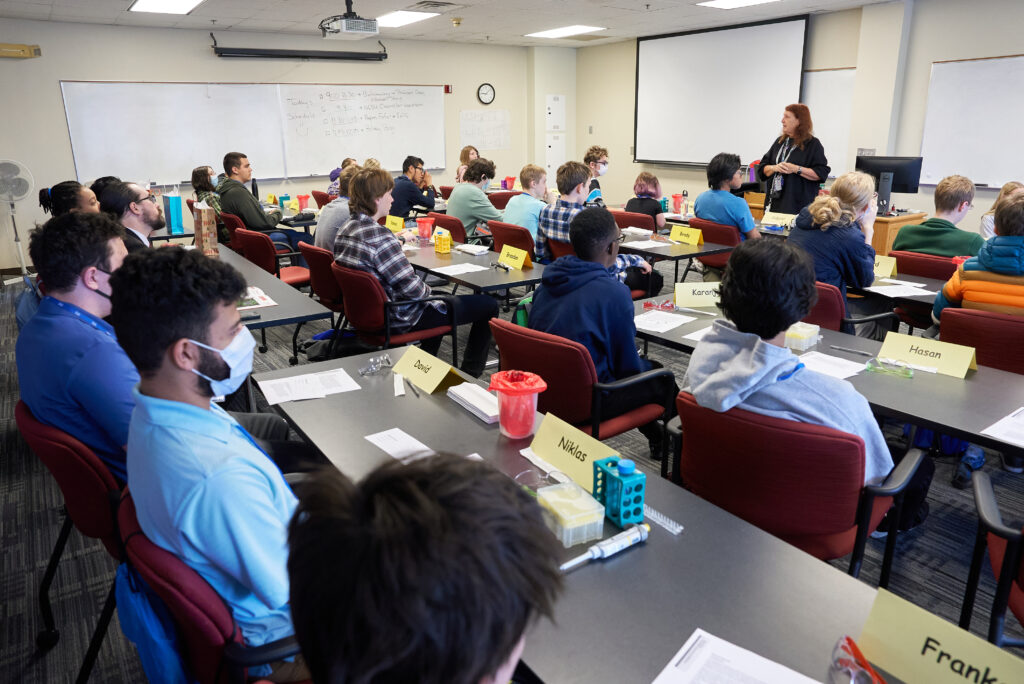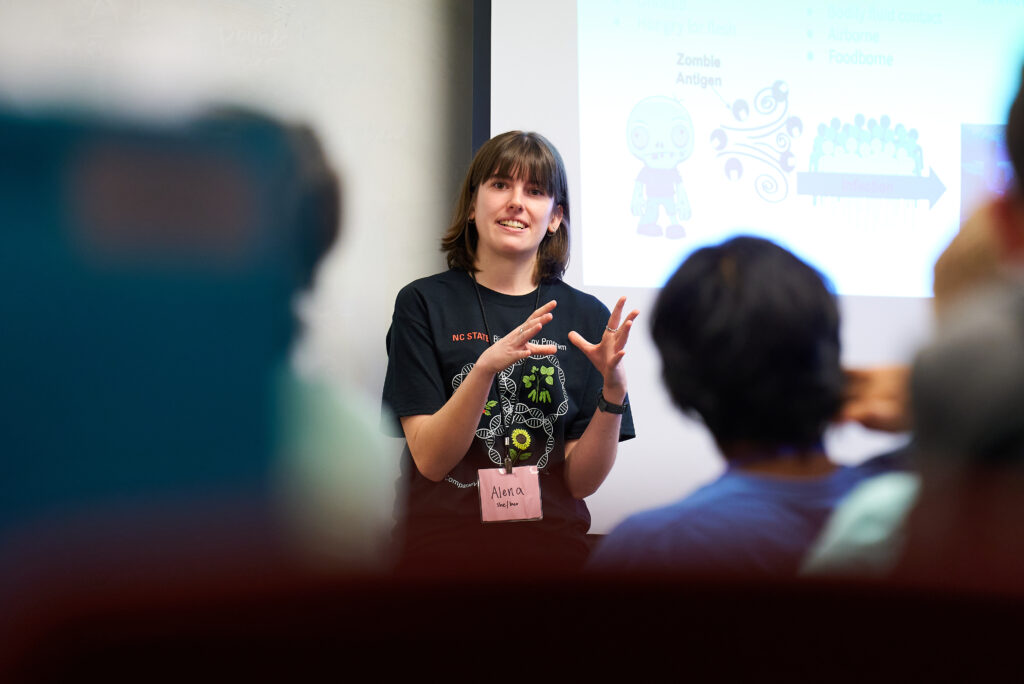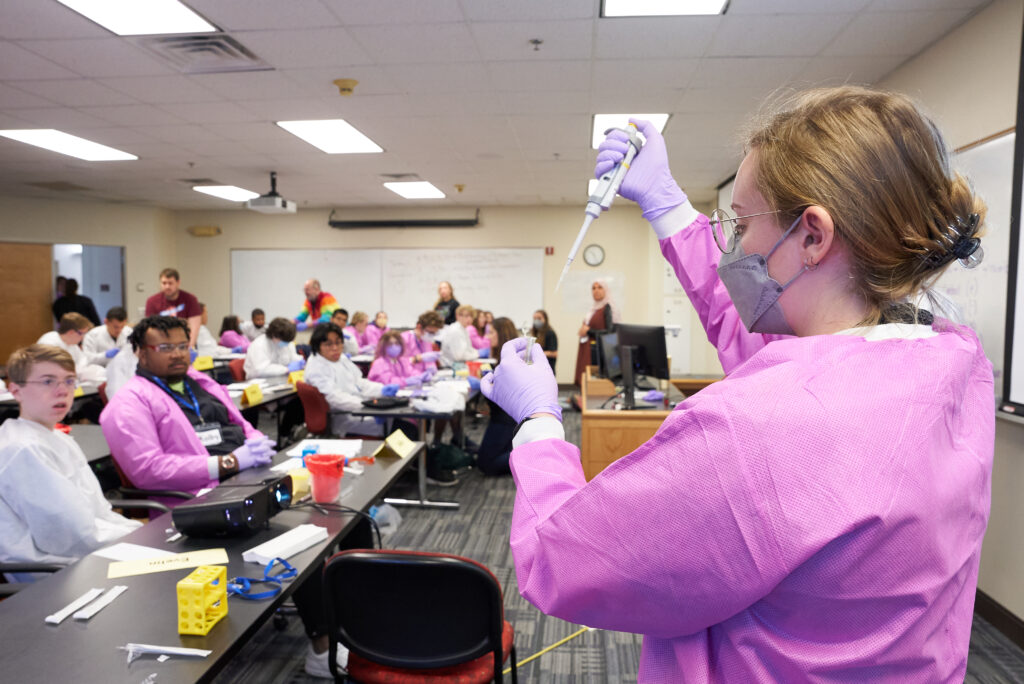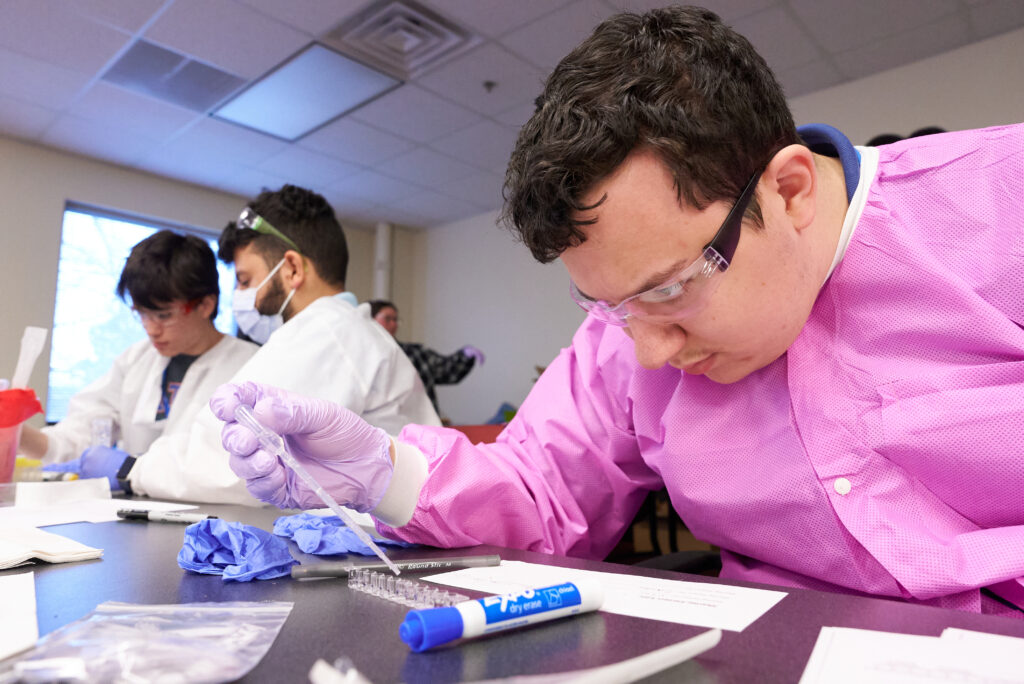The Science House brings opportunities in STEM to Neurodiverse Students : ELISA Edition!
If you’re like me and have never heard of NC State’s Science House, you need to! Geared towards making STEM fun and accessible for students and teachers alike, they facilitate workshops and outreach programs that impact over 200,000 students annually–that’s over five times as many students enrolled at NCSU! Every year (with a few exceptions for COVID), the BIT Program participates in one of their Catalyst outreach events which hosts 40 neurodiverse high school students. This year, BIT chose to run BioRad’s ELISA Immuno Explorer kit. With the help of many staff, post-docs, and MBTP graduate students, the students got to suit up in personal protective equipment (PPE) and have a hands-on biotechnology experience.

In most volunteer experiences, you simply show up on the day of, ready to lend a hand; however, this was a much more proactive experience. I joined the MBTP students and the MVP of the event, post-bac Madison Routh, to create a presentation that walked the students through what an ELISA is, explained the molecular biology, and also gave directions for the wet lab activity. Madison also prepped and packed all the materials needed, cut out over 100 paper antibodies, and knew the protocol like the back of her hand so that everything ran smoothly.
Once we arrived at the Science House on Centennial Campus for the event, we got to work setting everything up. After overcoming some technical difficulties where we had to “think and do” our way to a solution to project the prepared slides, the students all took their seats, and the program director, Joann Blumenfeld, gave an introduction. The kids and Joann all have a great relationship and it was so lovely to watch these students have Joann as a positive role model that does a wonderful job of encouraging learning. They were also very respectful to us BIT representatives and were more than willing to talk, listen, and certainly make us laugh.
After a quick rundown and introduction from Dr. Stefanie Chen, MBTP graduate student Samantha Kisthardt kicked off the presentation by teaching the students about antibodies, antigens, and how scientists use them. John Joyce, another MBTP graduate student, then walked the students through an interactive activity where they got to use paper antibodies, antigens, and substrate molecules to learn about how ELISAs work. After explaining how the components should be arranged, the students were left to place them in the correct order–and they did a great job! Alena Joignant, another MBTP graduate student, followed the activity by introducing the “Zombie Virus” to the students. She explained how two people in the classroom had this zombie virus, and in the activity, they were going to share samples with each other and more people were going to be infected. Then, by running an ELISA, we would see who ended up with the virus.

Using a micropipette for the first time is challenging for everyone, no matter who you are. Our biggest challenge throughout the activity was trying to keep cross-contamination to a minimum. Pipette tips were constantly changed, spills cleaned, and everything was labeled. Students really wanted their experiments to work, so they were extra careful.

As everyone worked through the ELISA, we would have to take breaks for incubations and wash periods. BIT representatives took this time to provide demonstrations of the next step and make sure the students understood what was happening as they were mixing all of these clear liquids together. When we were ready to add the substrate and figure out who was infected, the stakes were high. Once students learned they had the zombie virus, they immediately started drawing connections and figuring out who gave them the virus.

When everyone had their results, Dr. Melissa Srougi asked those who were positive for the zombie virus to raise their hand. For the most part, everyone on the left side of the room was positive, and the right side was negative. Students noticed and discussed how this could have happened. After an enthusiastic drum roll, Dr. Srougi and I revealed who the two students originally infected were. More technically, the two students were also known as our patient zeros. Not to anyone’s surprise, they were both seated on the left side of the room. One curious student asked how she could have been positive if she didn’t trade with either one of them. This was a great question that led us to the topic of epidemiology, or the spread of diseases. Because several rounds of trading had occurred, it was possible to get the “virus” from another student who had traded with one of the patient zeros.
Although sometimes difficult to understand, the pandemic has had a tremendous impact on society’s knowledge of epidemiology, and many of the students reflected on this knowledge at the conclusion of the activity. “Contact tracing” is a term they have most likely heard in school or at home, and is exactly what we did during the activity by having the students record everyone they mixed samples with.
When getting the privilege to work with neurodiverse high school students, it’s important to be flexible. It can be daunting to lead a class of 40 students, even more so when you are not sure how to best approach each student. Actively listening and demonstrating approachability are vital in facilitating a welcoming environment perfect for learning. Randy Woodson, NC State’s chancellor, was a prime example of this approachability. When he walked into the event, you would have never known he was there had Joann not introduced him. He was all smiles the whole time, and each kid felt comfortable enough to introduce themselves to him.

The herd of BIT representatives that showed up at 8:30 on a Saturday morning struck me with such a great sense of community. Seeing all of these people come together at all stages in their academic and professional careers to facilitate an exciting learning environment for these students whom the traditional classroom is not designed for was so wonderful.
- Categories: